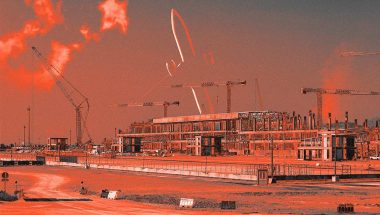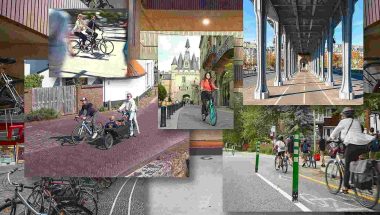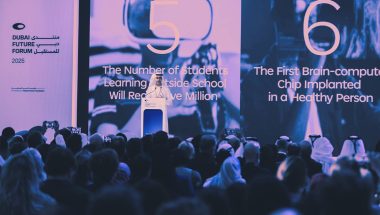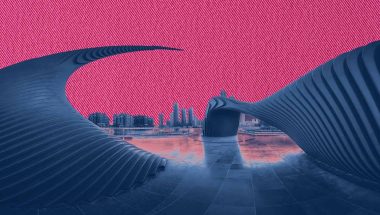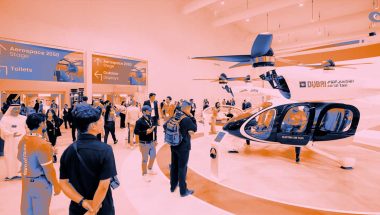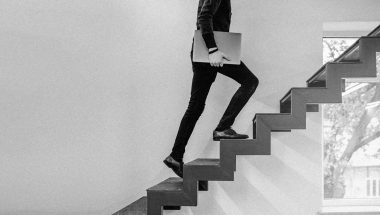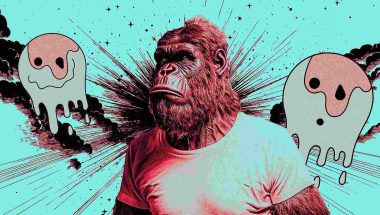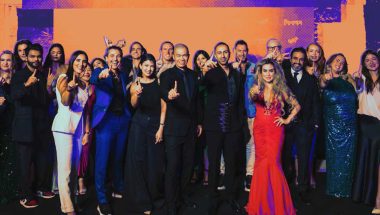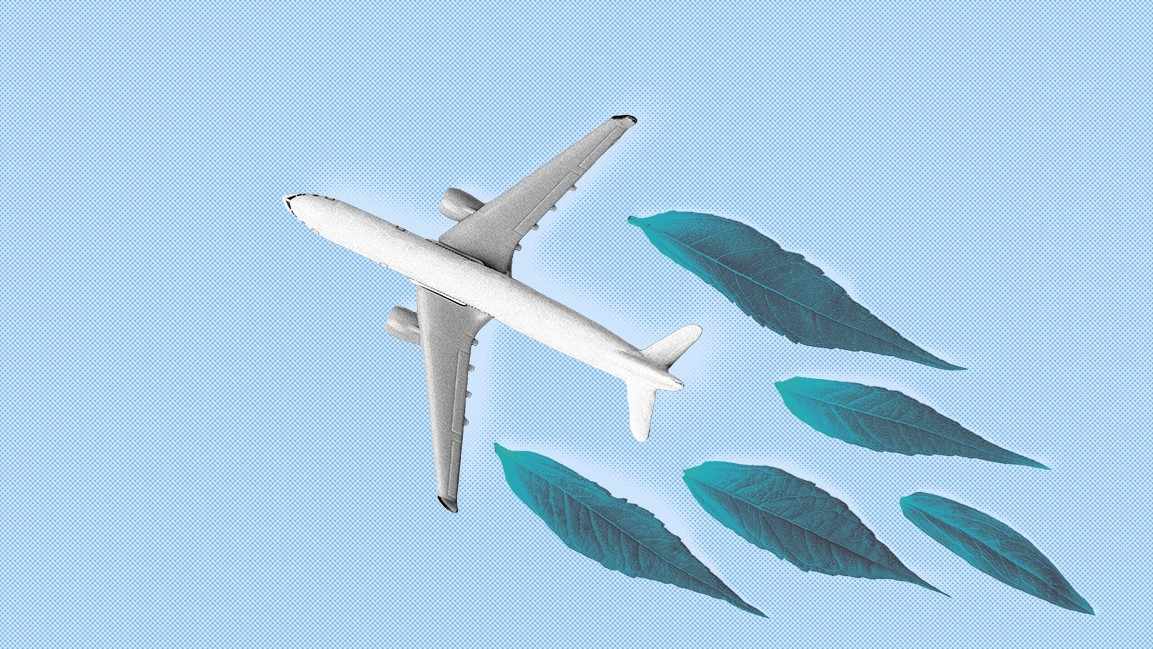- | 2:00 pm
Can the Middle East spark positive change through design? Experts at Innovation by Design Summit deliberate
The summit in Doha, held in partnership with Msheireb Properties was a celebration of design and creativity.
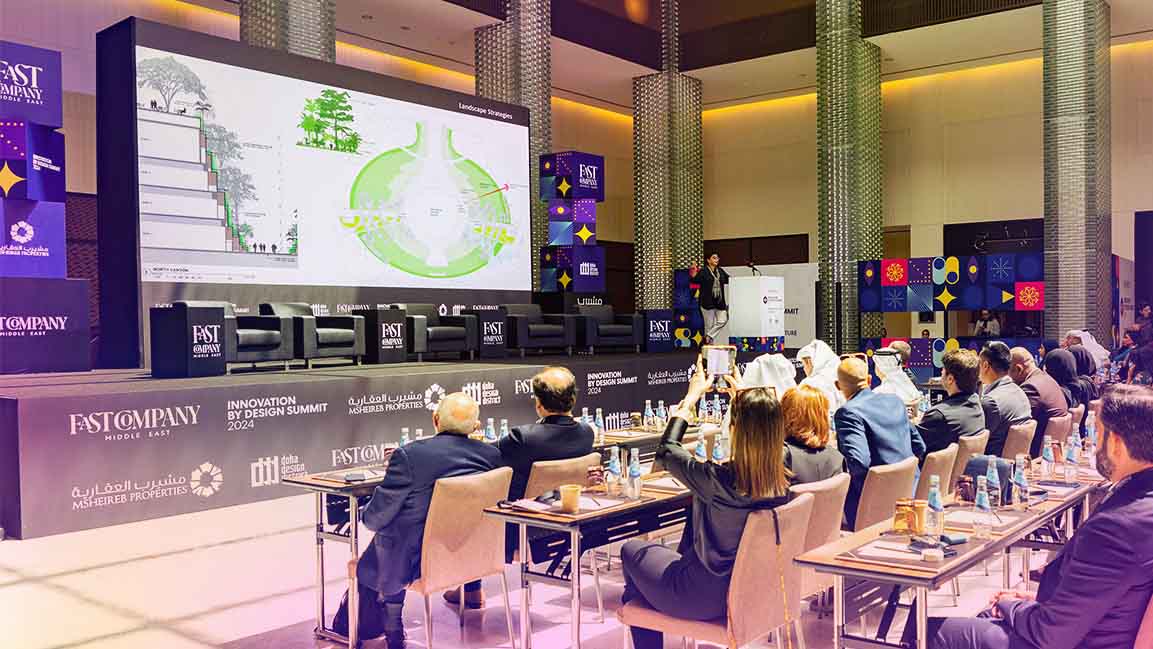
Many think that design is about making things beautiful. But design is much more than that — with it, you can change the world. Design can play a significant role in moving us from a linear economy to a circular economy, where valuable elements are reused or preprocessed.
From sustainable architecture to eco-friendly products and innovative technologies, creative solutions can mitigate environmental impact and promote a more sustainable future.
This shift entails a complete rethink of “business as usual.”
The inaugural Innovation by Design Summit held at Qatar’s Doha Design District had mixed-disciplinary groups of designers, architects, industry leaders, and visionaries in a disruptive conversation to inspire businesses to the pressing need to innovate using design.
The summit was organized by Fast Company Middle East with Msheireb Properties as the strategic partner.
In his keynote, Eng. Ali Al Kuwari, CEO of Msheireb Properties, said, “Qatar is leading the way in design across its many aspects. Smart, sustainable design is the future, and we’re proud to champion it.”
Addressing the audience, Ravi Raman, publisher of Fast Company Middle East, expressed how the event reflects the region’s creative prowess. “Today, we’ve all gathered with a united belief in the power of design and the power of design to shape the world. We all believe that design thinking can and should serve a higher purpose.”
At the heart of the summit was a central question: Can design save the world?
DESIGNING FOR A SUSTAINABLE FUTURE
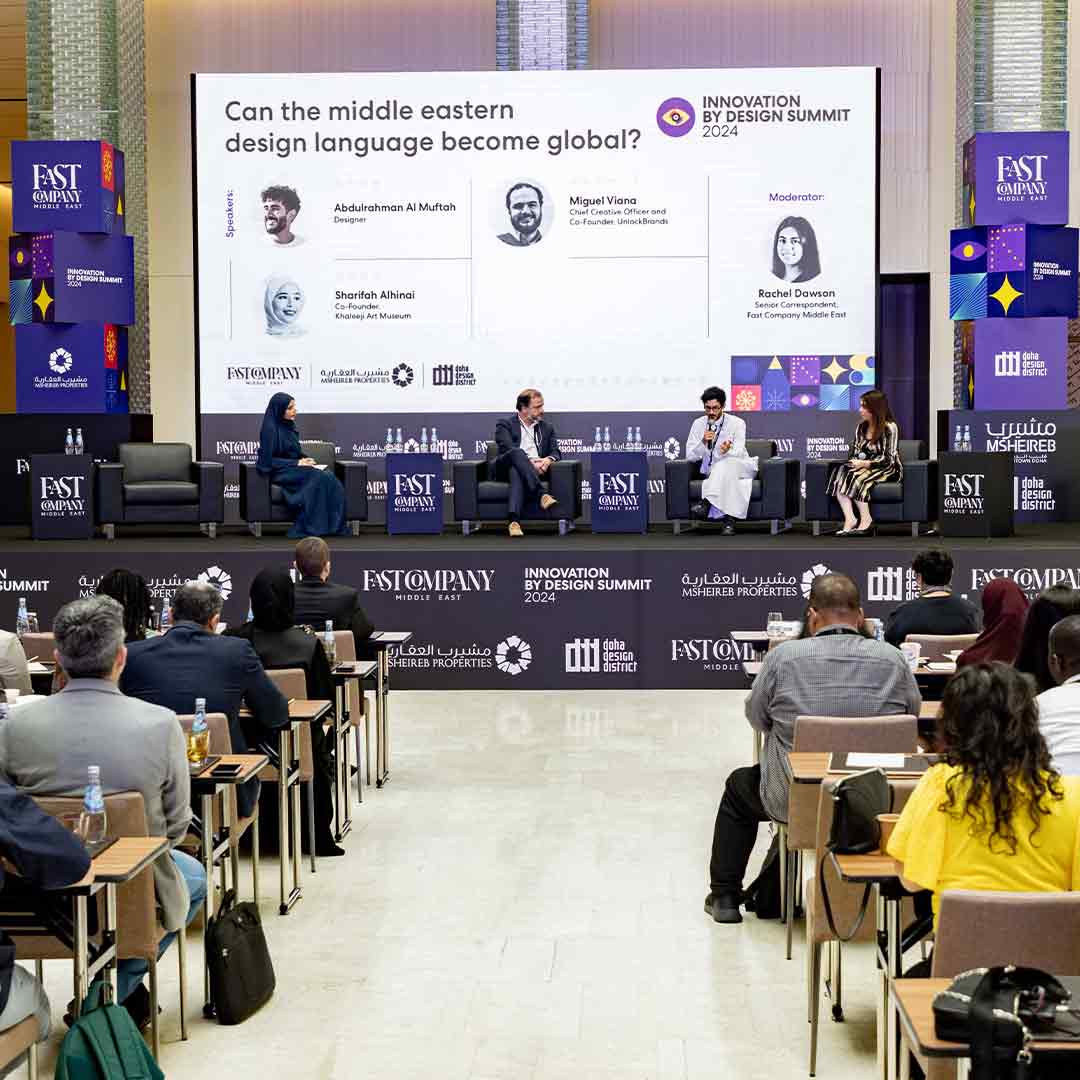
The day began with a presentation delivered by Charu Kokate, senior partner at Safdie Architects, addressing the importance of biophilic design in creating multipurpose spaces that blend nature and architecture.
“As architects, our duties must extend beyond what is given to us—to connect with nature, people, and communities. Biophilic design is supposed to be beneficial, something that impacts the users,” she said.
The first panel of the day focused on adopting sustainable modern materials. This session delved into the wider implications of the region’s shift towards sustainable materials, with notable panelists including Faysal Tabbarah, associate dean and professor of architecture at the American University of Sharjah; Matthew Utley, principal at Grimshaw; and Nasser Abulhasan, principal at AGi Architects.
Tabbarah suggested that sustainability in the region could be viewed through the lens of integrating existing land-based and historical practices with modern technology. “There are existing land-based practices, historical practices that are based on knowledge of the material in the region, and if we can harness that knowledge that can be potentially integrated with technology, then there might be an avenue to work toward a non- or less extractive material practice.” This approach aims to reduce reliance on imports and pave the way for a more sustainable future in the region.
Utley pointed to the slow pace of change in architecture and the integration of sustainability. “We should have the conversation more broadly to set up incremental steps within the design communities and the professions to further that agenda.”
According to Abulhasan, the need of the hour is rethinking our approach to materials and lifestyle choices. “By reevaluating how we live and utilize space, we can naturally reduce material consumption and innovate with alternative materials over time. This shift in living habits and design thinking is key to sustainable practices in architecture and construction.”
In a breakout session titled Transforming Waste into Resources, Arthur Huang, founder of Miniwiz, discussed the challenges and opportunities of implementing decentralized recycling on a global scale.
According to recent statistics, only a small percentage of global plastic waste is recycled, with approximately 9% of all plastic waste generated being recycled. This highlights the immense potential for innovation and scalability in transforming waste into valuable resources, addressing critical environmental challenges, and promoting sustainable consumption patterns.
Highlighting the scalability issues of recycled products, he expressed concerns about consumers’ difficulties when transitioning to these products. “The need of the hour is to create a new generation of products that has a scale to match the amount of trash we have,” Huang said.
Equally important as sustainability is the power of creativity.
The following sessions of the day served as a reminder of how the two reinforce each other in diverse contexts.
HARNESSING A CREATIVE TOMORROW, TODAY
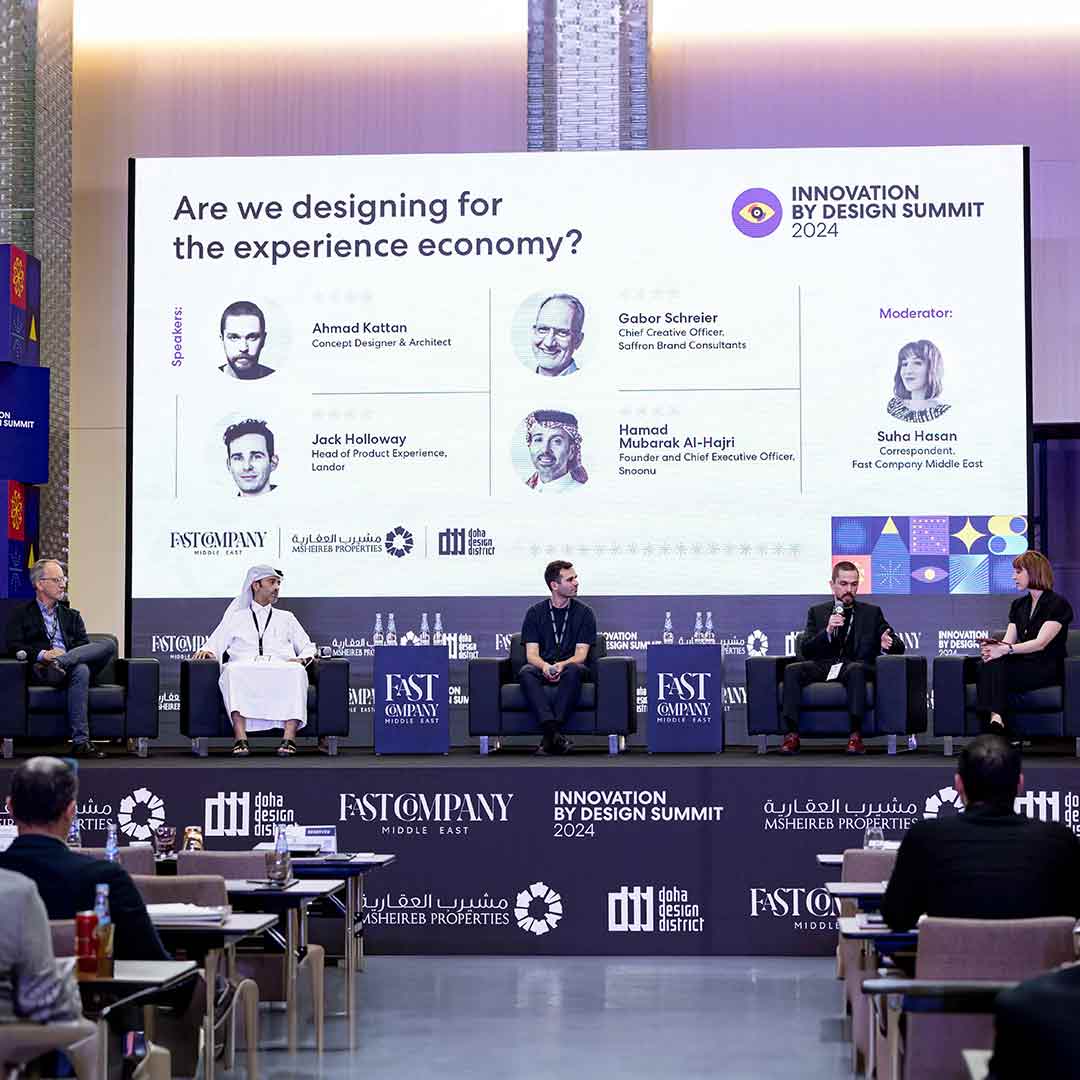
Is creativity at risk of being stifled by rapidly advancing technology? While some people view the adoption and integration of technology in creative industries as a tool to replace them, experts see it differently.
“The fundamental question is what we do with design. I think people and their drive change the world, and design is a product of that,” said Qatari composer and songwriter Dana AlFardan in a fireside chat. She explores AI to enhance the experience of music.
In a presentation on Mind the AI Gap: Deciphering Content and Business Realms, Dr. Mario R. García, CEO and founder of García Media, outlined the revolution taking the media world by storm as most people now consume information through their phones. “All of us in design should be designing things to be consumed vertically and on a mobile device.”
Highlighting what differentiates human creativity from AI, Garcia said, “Humans can connect the disconnected, robots cannot. AI is a tool; a human is a creator.”
Nayef Al-Ibrahim, founding partner and CEO of Ibtechar Digital Solutions, discussed adopting technology in the creative space. During a panel discussion with Mohammed Al-Qassabi, head of robotics and AI at the Qatar Scientific Club, the panelists agreed that the right balance between human creativity and technology needs to be struck.
“Either we disrupt an existing scene or replace an existing use of it, and with that, we adopt new methodologies. Technology goes through a maturity curve, and then we have to consider the learning curve for humans—both of which will form a governance framework to benefit all,” said Al-Ibrahim.
He adds that the design-thinking process takes time, whereas ChatGPT provides a quick and easy fix. “What’s going to happen is the skills that are required from humans are going to shift from spending that time thinking creatively to contextualizing the output of ChatGPT and at the same time building a relevancy between the two and how it will be deployed.”
A fireside chat dived into integrating technology in the museums and art industry, providing further accessibility to all and mainly impacting visitor experience.
Shaika Al-Nassr, director of The Museum of Islamic Art, spoke on the museum’s relaunch in 2022, as it required a more immersive touch. “We’ve done multiple evaluations, and the result that came was that visitors were experiencing a lack of engagement and minimal information provided. We integrated technology to complement the objects, not to overtake the experience.”
Similarly, Fahad Al-Turky, exhibitions and public programs manager at Msheireb Museums, said, “We started looking at how the different layers of content and interactivity that we can add resonate with different audiences, particularly with the mobile application.”
While potential benefits include having remote experiences, there is a warning sign. “You can’t talk about AR/VR without AI. Any one of us can curate our own experience of an exhibit,” he said, adding that this puts into question what this means for curators and museum professionals when something as powerful as AI and ChatGPT is only getting stronger.
Touching on a specific form of digital art, Amrita Sethi, an NFT artist, spoke at a breakout session titled Creating for Gen Z about the significant role that technology has played in her work. “What is important for me is inspiring change through art and technology,” she said.
On a panel discussing user experience, Jack Holloway, head of product experience at Landor, Hamad Al Hajri, founder and CEO of Snoonu, Gabor Schreier, chief creative officer at Saffron Brand Consultants, and Ahmad Kattan, concept designer and architect, explored comprehensive strategies recognizing the interdependence of engineering, marketing, design, and interface.
Holloway said there has been a shift in user experience. “Previously, experiences were more about transactional and functional moments. Now, we are moving to a space where emotion drives what we want the experience to feel, impacted by technology and social media. Our brands and organizations are starting to see the benefits of creating such emotive experiences and social currency.”
In a panel discussion titled Can the Middle East’s design language become global? experts deliberated on the globalization of design identities and how brands keep abreast of the region’s design sensibilities. Expert panelists included Abdulrahman Al Muftah, a designer; Miguel Viana, chief creative officer and co-founder of UnlockBrands; and Sharifah Alhinai, co-founder of Khaleeji Art Museum.
All agreed that the region had an edge over other parts of the world in terms of artistic and cultural heritage; the strong legacy of the Middle East in architecture, artistry, and calligraphy makes it a force to reckon with on a design front.
“When it comes to the influence of other cultures in the regions, artists have tackled this in many different ways. It’s interesting to see every day how artists come up with creative ways to merge what’s Eastern or Western or what is traditional with what is contemporary and to continue to draw inspiration from our rich heritage,” said Alhinai.
Viana spoke about designing a visual identity representative of the region, drawing from his experience working on major events such as the FIFA World Cup Qatar. “We must remember it’s important to resonate with local and international audiences in a way that pays homage to a region but is easy to relate to as well.”
In an interactive session, Manuel Lima, designer and author, tackled developing an ethical design practice for a better world. He highlighted several loopholes within the world’s consumption cycles and how design could be channeled to have a positive impact on the world, leaving the audience optimistic and hopeful of the possibilities of human-centered design.
In another impactful session, Tim Martin, managing director and principal at Gensler Middle East, provided insights into the key design trends shaping the region and their potential for regional revitalization, how design’s universal language addresses challenges, builds consensus, and drives positive change amidst economic pressures and climate challenges.
The creators’ roundtable session focused on innovation, expression, and empowerment, bringing together creators Farah ElKordy and Hamad AlAmari. Highlighting the challenges of constant production in the content cycle, ElKordy said, “It’s important to focus on getting the business side right, which turns people into professionals.”
The summit ended with the inaugural Msheireb Innovation in Design Awards, which recognizes design-driven solutions and aims to promote design thinking as a catalyst for positive change.
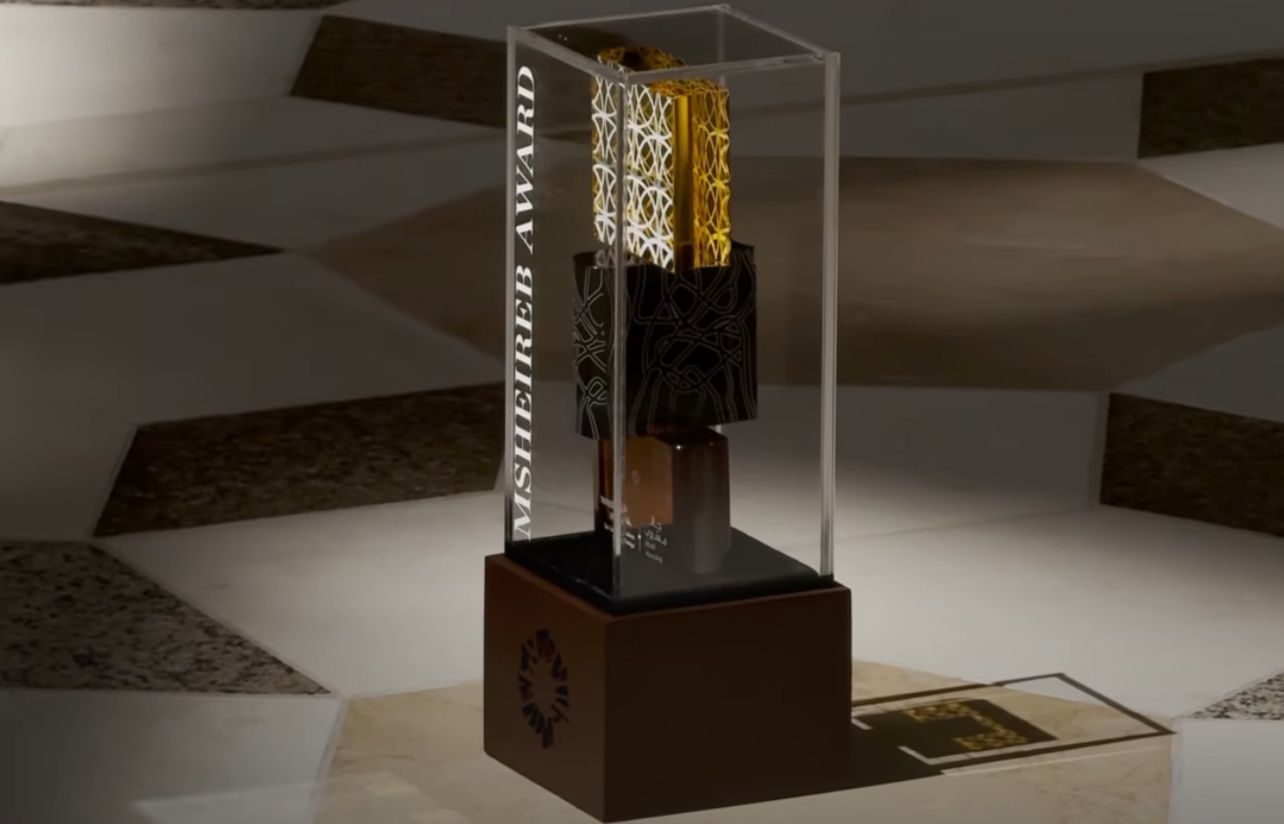
Al Kuwari said, “We established the Msheireb Award for Innovation in Design to celebrate innovative design thinking because we believe that smart, accessible design can change the world for the better. Tonight’s winners embody this belief.”
A special performance by the Qatar Philharmonic Orchestra, playing pieces composed by Dana Al Fardan, a Qatari composer and songwriter, set the celebratory tone for the evening.
With a spotlight on creatives reshaping their industries, Landor was honored with the Human-centered Design award; Mad Architects was honored in the Sustainable Design category; Pandora nabbed the Lifestyle and Luxury Design award; and Garcia Media received the Technology-powered Design award.
Overall, the event served as a dynamic platform that encapsulated the future of creative thinking.
Innovation by Design will be back next year.









